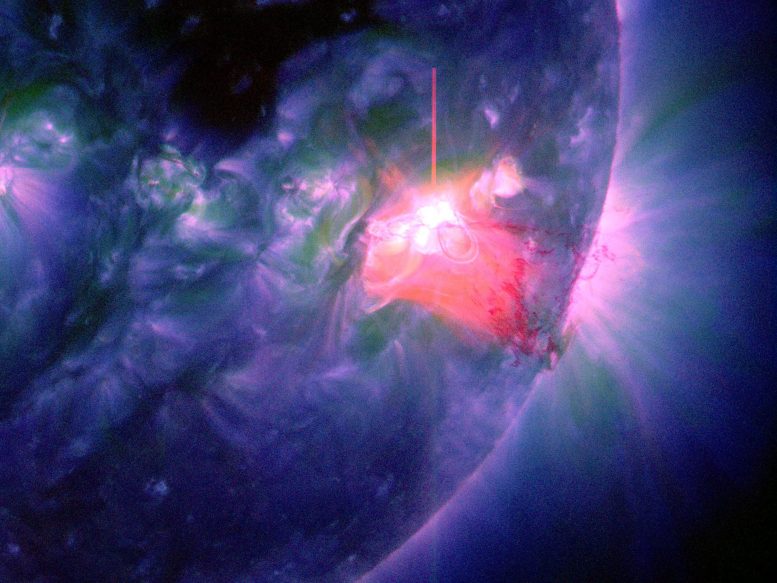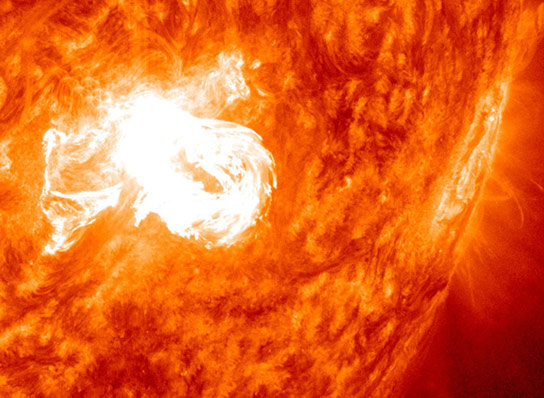
Several wavelengths of light are combined in this New Year’s Day solar flare image, categorized as an M9.9 and peaking at 1:52 p.m. EST on January 1, 2014. Each wavelength represents material at a different temperatures, helping scientists understand how it is moved and heated through these events. Credit: NASA/SDO
NASA’s Solar Dynamics Observatory spots two new solar flares.
The sun ushered out 2013 and welcomed 2014 with two mid-level flares on December 31, 2013 and January 1, 2014. Solar flares are powerful bursts of radiation. Harmful radiation from a flare cannot pass through Earth’s atmosphere to physically affect humans on the ground, however — when intense enough — it can disturb the atmosphere in the layer where GPS and communications signals travel. This disrupts the radio signals for as long as the flare is ongoing, anywhere from minutes to hours.
The first flare (below) was categorized as an M6.4 and it peaked at 4:58 p.m. EST on December 31. The second (above) was categorized as an M9.9 and peaked at 1:52 p.m. EST on January 1. Both flares emerged from the same active region on the sun, AR1936.

An M6.4 class solar flare erupts from the sun in this image from NASA’s Solar Dynamics Observatory, which was captured on December 31, at 4:59 p.m. EST. The image shows light in the 304 Angstrom wavelength, which is typically colorized in red. Credit: NASA/SDO
The imagery of the flares was captured by NASA’s Solar Dynamics Observatory, which keeps a constant watch on the sun, collecting new data every 12 seconds.









is the Sun and the stars visible to the human eye outside of this atmosphere?